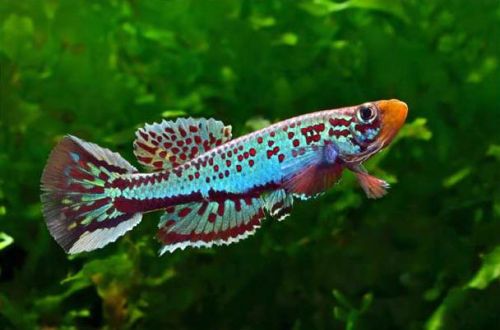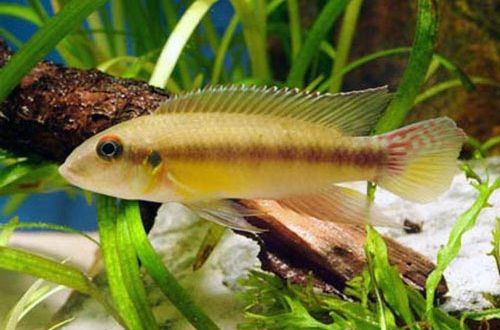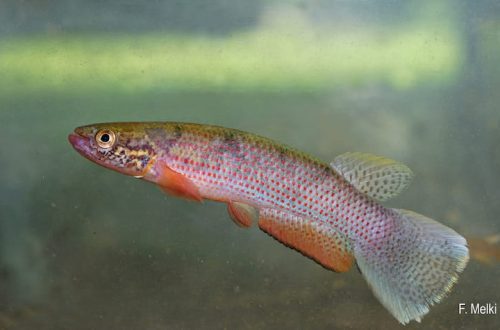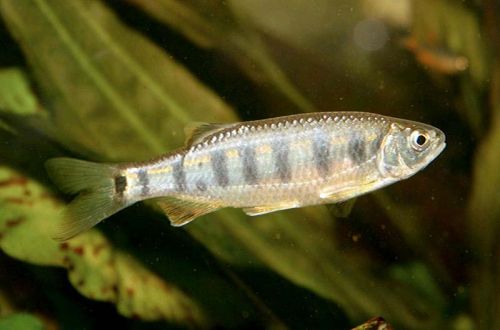
Aphiosemyon of Cameroon
Aphiosemion Cameroonian, scientific name Aphyosemion cameronense, belongs to the family Nothobranchiidae (Notobranchiaceae). Small bright and rather temperamental fish. The content is somewhat more complicated than that of other popular species.

Contents
Habitat
Comes from equatorial Africa. Despite the name, the natural habitat is much wider and covers not only the territory of Cameroon, but also the northern regions of Gabon, Congo, Equatorial Guinea. Inhabits shallow streams and lakes under the canopy of tropical rainforest. A typical biotope is a shallow, poorly lit reservoir, the bottom of which is covered with a layer of plant organic matter (fallen leaves, branches, tree roots. Substrates consist of silt and mud.
Brief information:
- The volume of the aquarium – from 40 liters.
- Temperature – 18-23°C
- Value pH — 5.5–6.5
- Water hardness – soft (2-7 dGH)
- Substrate type – dark soft
- Lighting – subdued
- Brackish water – no
- Water movement – little or no
- The size of the fish is 4–6 cm.
- Meals – any rich in protein
- Temperament – peaceful
- Keeping in a group of 4-5 individuals
Description
This species is characterized by pronounced sexual dimorphism. Males reach a length of up to 4 cm. Bright variegated color combines blue and red colors. Females are larger, up to 6 cm, but inferior in color to males.
Food
They are considered an omnivorous species, they can be accustomed to dry freeze-dried food, but, as many aquarists note, Cameroonian Afiosemion prefers live or frozen food in the form of bloodworms, brine shrimp, large daphnia, fruit flies, etc.
Maintenance and care, arrangement of the aquarium
The optimal size of the aquarium for 4-5 fish is 30-40 liters. The design uses dark soft soil, dense thickets of plants, including floating ones. The lighting is subdued. They need soft, slightly acidic and relatively cool water for tropical fish, not higher than 23 ° C. The latter can be a problem when kept in the summer, because instead of heating, it will be necessary to cool the water.
The fish do not react well to the current inside the aquarium, the main source of which is the filtration system. A simple airlift filter is recommended as it does not cause excess water movement.
Behavior and Compatibility
Males are belligerent towards each other, competing for limited territory, and are not too tolerant of females except during the breeding season. Smaller fish will certainly be attacked by larger ones. The presence of shelters can somewhat reduce aggression. Similar behavior extends to representatives of closely related species.
Reproduction
In nature, in unstable conditions, when shallow water bodies can dry up completely, turning into a dirty puddle, the fish have developed a unique breeding strategy. They lay eggs in a layer of soil or among dense thickets of plants. If the reservoir dries up, then the eggs “freeze” in development in anticipation of rains. In this case, the incubation period can stretch for several months. If the water level does not decrease, then the fry appear within 14–20 days.
Fish diseases
Suitable living conditions minimize the likelihood of a disease outbreak. The threat is the use of live food, which is often a carrier of parasites, but the immunity of healthy fish successfully resists them. Read more about symptoms and treatments in the Aquarium Fish Diseases section.





